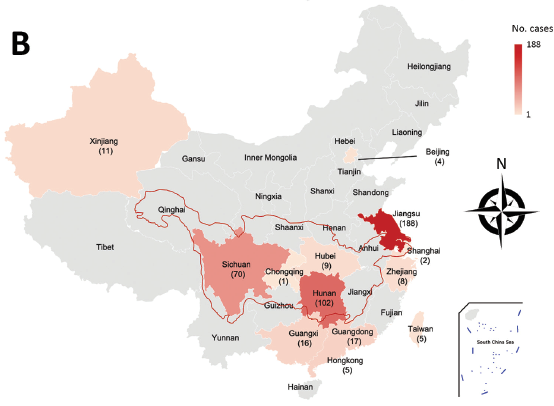Almost no one survives invasive aspergillosis without antifungal therapy. Thought to affect up to 300,000 each year across the world, a new research paper from Fudan University in Shanghai, China and the Global Action Fund for Fungal Infections (GAFFI) now estimates that 1,179,000 people suffer from invasive aspergillosis in China alone. This estimate excludes COVID-19 and influenza, both additional risk factors
The new estimates are today published in the prestigious journal Emerging Infectious Diseases, published by the US Centers for Disease Control. The first author Ling-Hong Zhou is a PhD student under Professor Li-Ping Zhu and said: “We were genuinely surprised by the size of this problem in China compared with all other publications.”
The authors assembled all the literature from China from 1950-2019 describing the incidence and prevalence of 17 different fungal diseases and applied these data to populations at risk in China, including 12 different specific risk factors. Over 71 million (5% of the population) are thought have a fungal infection.
The populations at risk of invasive and chronic aspergillosis include 774,000 cases of lung cancer, 29 million admitted to hospital for COPD (emphysema), 844,000 survivors of pulmonary tuberculosis, 41,200 cases of acute myelogenous leukaemia, 106,000 late stage HIV patients and 21,400 transplant recipients. Patients with severe influenza and COVID-19 also have high rates of invasive aspergillosis, but estimating the incidence is difficult because of the variable numbers affected annually.
The authors have also provided new maps of talaromycosis and histoplasmosis (pictured) in China based on the geography of many reports – the former particularly in areas around the Pearl River and the latter in the Yangtze River basin.

Professor David Denning of the University of Manchester and GAFFI declared: ‘This extraordinary paper required reviewing more than 1200 published papers and then multiple assumptions. GAFFI welcomes this key paper supporting its mission to improve the care of patients with fungal disease.”
Link to paper Risk-Based Estimate of Human Fungal Disease Burden, China